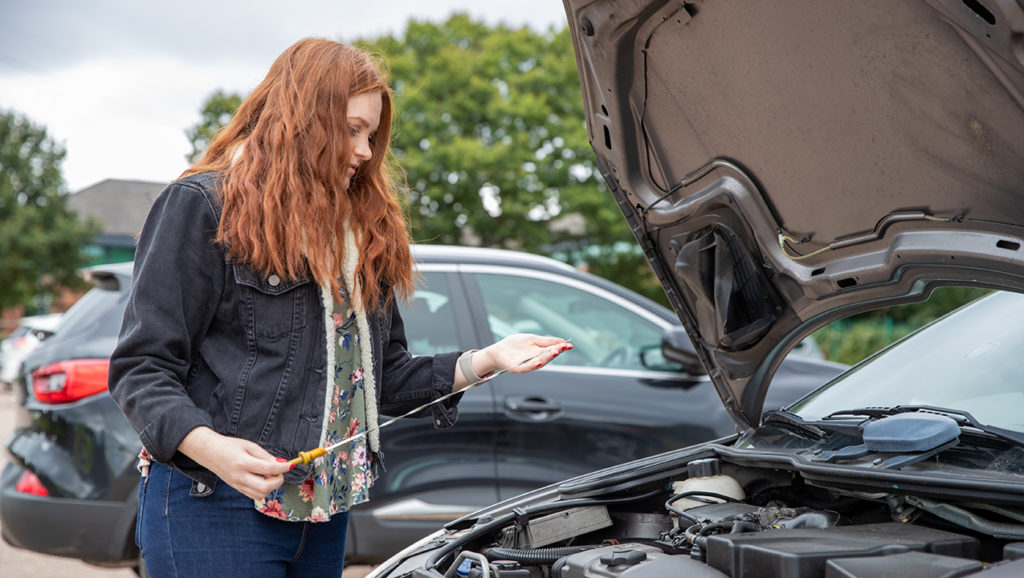
Most breakdowns are avoidable and simple vehicle checks can help you have a safer journey. Check your tyres, fuel, oil and water.
Highways England recommend carrying out a few quick and easy checks to ensure you and your vehicle are safely equipped to drive – the advice below includes details of what to check.
Advice on what to check
You and your journey
- Make sure you are well rested and are not under the influence of alcohol or drugs.
- Plan your route before leaving, and identify opportunities for you to take a break if necessary during your journey.
- You can check the latest traffic conditions from Traffic England.
Tyre tread
- The legal minimum tread depth for car tyres in the UK is 1.6mm. Driving without the legally required amount of tread can adversely affect your grip, braking distance and steering.
- If you are stopped by the police and found with illegal tyres, you could receive a £2,500 fine and 3 penalty points per tyre.
Tyre pressure
- Driving with underinflated or overinflated tyres can adversely affect your braking distance, steering, fuel efficiency and the lifetime of your tyres.
Fuel level
- In 2015, there were more than 7,000 breakdown incidents due to vehicles running out of fuel.
- Always keep your tank at least one-quarter full to avoid running out on your journey.
- You can be issued a Fixed Penalty Notice in some locations if your breakdown was foreseeable, such as running out of fuel.
Oil level
- Maintaining the correct oil level is essential as the oil lubricates, cleans, cools and protects the moving parts of your engine, preventing your engine from seizing up and breaking down.
Water level
- To ensure you have good visibility, always keep your screen wash topped up so you can clear any debris or dirt off your windscreen.
Lights
- Your lights are not only essential for you, they are also essential for other drivers to understand how you are driving your vehicle and how you intend to manoeuvre.
Breaking down
Knowing what to do in an emergency or a breakdown is the key to keeping yourself and others safe.
If your vehicle appears to have problems or is damaged and you’re on a motorway, always try to exit at a service station or the next junction.
If that’s not possible, you should follow these steps:
- Pull into an emergency area. These are regularly spaced along the motorway and are marked with blue signs featuring an orange SOS telephone symbol.
- If you can’t get to the SOS telephone in an emergency area but have a mobile phone with you, call our customer contact centre on 0300 123 5000. Why not save this number in your phone, so it’s available when you need it.
- If you can’t get to the hard shoulder or an emergency area but your vehicle can be driven, move it as close as possible to the nearside (left hand) verge or other nearside boundary or slip road and put on your hazard lights.
- If you feel you can exit safely with any occupants, consider exiting your vehicle via the nearside (left hand) door and get away from the road. Keep clear of your vehicle and moving traffic at all times. For example, if your vehicle gets hit, you’re out of the way.
- Switch on your hazard warning lights and any other lights such as rear fog lights or side lights, to increase your visibility especially if it’s dark or foggy. Do not put out a warning triangle.
- Contact your breakdown recovery service. All motorists should be able to make their own recovery arrangements in the event of a breakdown. We advise you to carry details of your provider with you.
If it’s not possible to exit your vehicle safely, there’s no safe place to wait, or you feel your life is in danger, put your hazard warning lights on and stay in your vehicle with your seat belt on. If you have a mobile phone dial ‘999’ immediately.